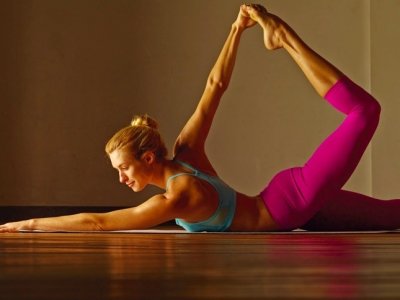

It’s important to incorporate the eight limbs of yoga into your practice in order to reap all the benefits you can from this timeless treasure. Since I’ve worked on bringing my awareness to the other limbs of yoga, I feel more connected in each one as a continuous practice, rather than separated like I did before. You definitely want to check out these limbs of yoga in order to deepen your practice.
One element of the eight limbs of yoga I like is that you tackle them in unison, not working your way up the ladder until you’ve accomplished them all. Yamas are identified by Rolf Gates and Katrina Kenison in their book “Meditation from the Mat: Daily Reflections On The Path Of Yoga” as the moral restraints needed to live an authentic lifestyle. These include lessons of non-violence, truthfulness, non-stealing, moderation and non-hoarding. The ethical elements of the yamas allow you to put your words in to action as you treat others as you would like to be treated. Applying that karma to your interactions with others will change the way you communicate with them and with yourself.
The five observances, or niyamas, relate to self-discipline and spiritual health. They include purity, contentment, zeal, austerity, self-study and devotion to a higher power. Observing the niyamas connects you to the spiritual energy of the universe, no matter what God or gods you believe in. It fosters a practice of surrender to something, whether a God or fate. You can strengthen your practice with the niyamas by learning more about them. Establish a regular practice of meditation or consider attending temple or church services in order to bring your awareness to the spiritual side of yoga. You can muscle your way through poses but when you maintain a healthy spiritual practice, you will deepen your study in more ways than you can imagine.
Asana is the most famous of the eight limbs of yoga. This includes getting on your mat whether in a class, by yourself or with a program on your TV to do yoga poses. The physical movements and poses allow you to connect that spirituality to your body, becoming increasingly aware of your own sacredness.
Pranayama, or breathing exercises, is widely known to yogis who practice Kundalini. Other forms of yoga bring awareness to your breathing as you connect it to the movements of your body. Harnessing and working on pranayama can help you calm down and find inner peace. I was recently at a standing-room-only concert and was incredibly hot and impatient at times. In the midst of all the other people there, I started to focus on my breathing, incorporating what I’ve learned about pranayama to help pull me out of my head and back to the moment.
Self-reflection has played a part in almost all of our lives as we ponder what we are known as, consider what we are and identify with who we’d like to be. Pratyhara is that inner search to withdraw from the physical world around you in order to look at our lives objectively. You can practice pratyhara by reflecting on your habits that both help your growth and hinder your development.
Dharana means concentration. Sure you concentrate on your breathing and body in both pranayama and asana respectively, but dharana is the moment when you can focus on how to slow down thought processes and the distractions your mind throws at you. Dharana leads to meditation but is not meditation. It is the efforts to concentrate, slow down and focus.
Dhyana is meditation. Extended periods of contemplation or meditation allow you to be still and mindful while deepening your practice and self-awareness. Dhyana is different from dharana because the latter brings your awareness to one-point of focus such as “the repetition of a sound” or “a specific energy center of the body” as yogajournal.com points out. It’s a fine line but it’s the difference between the focus on one point and the uninterrupted flow of concentration.
Have you ever felt completely connected with the universe, its spiritual energy and yourself all at once? Even for a moment? Samadhi is this blissful realization of complete surrender as you transcend your body and identify as one with everything from the sky to the dust to the hope in our souls.
The eight limbs of yoga are all elements that you need to add to your life in order to live a truly authentic life with genuine inner being. What do you think is the most challenging part of adding these limbs of yoga to your life? What can you do to change that?
Please rate this article
More